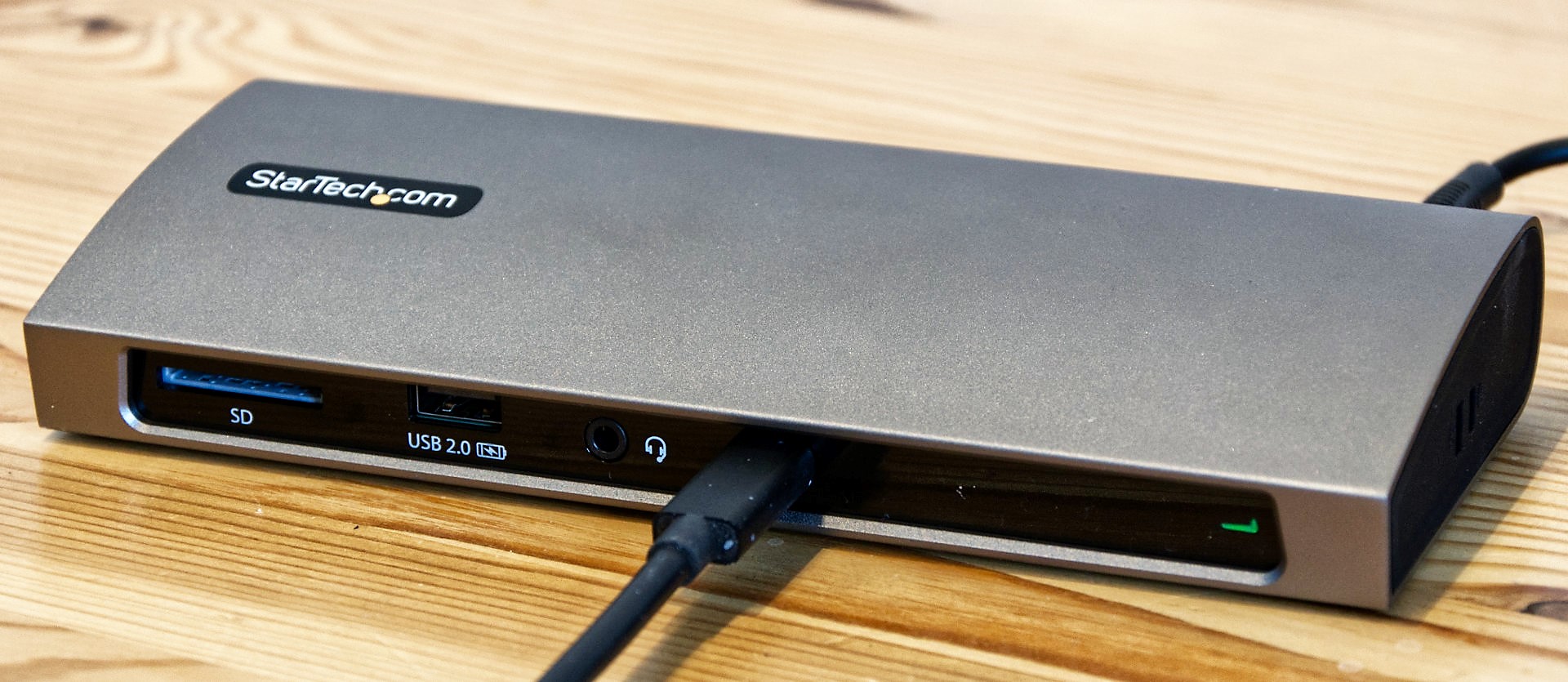TechRadar Verdict
It might cost an excessive amount, but StarTech pulled out all the functionality stops with its dock to make it highly desirable. We only wish it wasn’t so expensive and came with some display adapters.
Pros
- +
Thunderbolt 4
- +
96 watts charging
- +
3x downstream TB4 ports
Cons
- -
Expensive
Why you can trust TechRadar
StarTech is a Canadian business with distribution centres in the United States, Canada, the United Kingdom, and Hong Kong.
It offers an enormous range of cables, equipment and accessories that are popular with many IT staff, audiovisual engineers and tech-savvy enthusiasts alike.
Already supporting Thunderbolt technology, that StarTech would embrace the new Thunderbolt 4 standard wasn’t something of a foregone conclusion.
Facing stiff competition from Caldigit, OWC, Plugable and Glyph, what unique functionality has the StarTech Thunderbolt 4 Dock got?
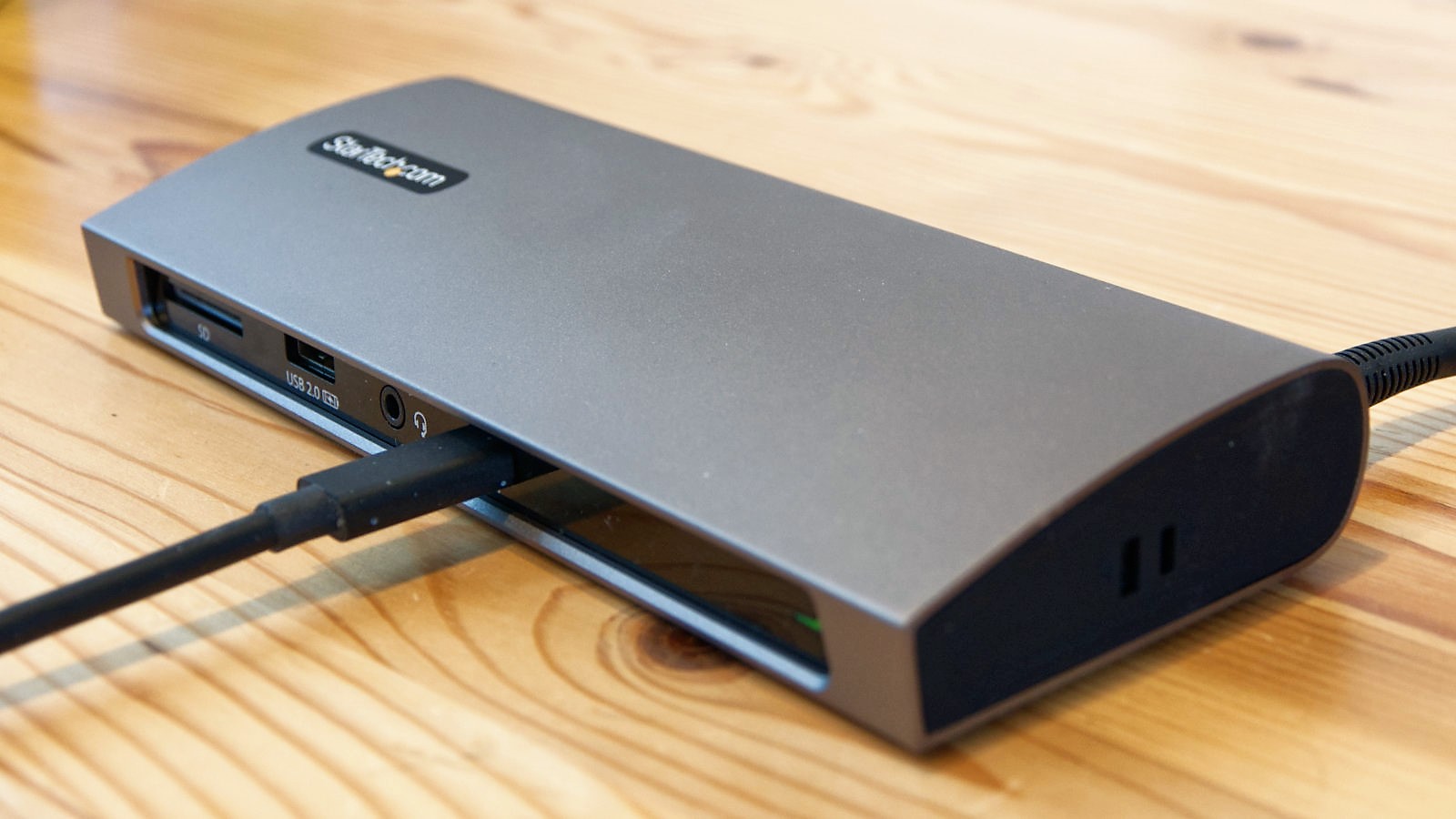
Price, availability and value
In a word, ‘ouch’. At the time of writing to US customers, the StarTech Thunderbolt 4 Dock is a whopping $439.99.
Where the USA and Canadian versions of the StarTech website list the Thunderbolt 4 Dock, it isn’t listed on the European or Asia product pages at this time.
The pricing appears to reveal how these products have been previously positioned by this manufacturer. The StarTech Thunderbolt 3 Dock, with similar functionality, costs $389.99.
Sign up to the TechRadar Pro newsletter to get all the top news, opinion, features and guidance your business needs to succeed!
To put the high price of this hardware in perspective, the nearest competitor solution is the OWC Thunderbolt Dock, a device that costs just $279, or 64% of the StarTech price.

Design
Over the past year, we’ve seen some disturbingly unimaginative Thunderbolt dock and hub designs that are little more than aluminium tubes.
Thankfully StarTech’s engineers have slightly more flair, and its design seems to borrow inspiration from an aircraft wing. Being aerodynamic might not impact the technology housed inside the dock, but it certainly looks better than some docks we’ve seen.
One slightly strange twist on the wing aesthetics is that when placed on the desktop for use, the narrow trailing edge faces the user and the thicker leading edge faces away.
This choice makes some sense, as most ports are on the back of the device, and the sheer number exceeds the available space on the narrower front face.
The front face has a full-sized SD card slot, a single USB 2.0 Type-A port, a 3.5mm audio jack and a single Type-C Thunderbolt link from a connected computer.
Around the back is the power receptacle, not less than three USB 3.2 Gen 2 (10Gbps) Type-A ports, three Type-C Thunderbolt 3 ports and a single 1Gbit Ethernet LAN port.
There are no HDMI or DisplayPort outputs, although it is possible to convert any of the three Thunderbolt ports into monitor connections using adapters that, unsurprisingly, StarTech makes.
On the right side are two security slots, and the left side has no details on it at all.
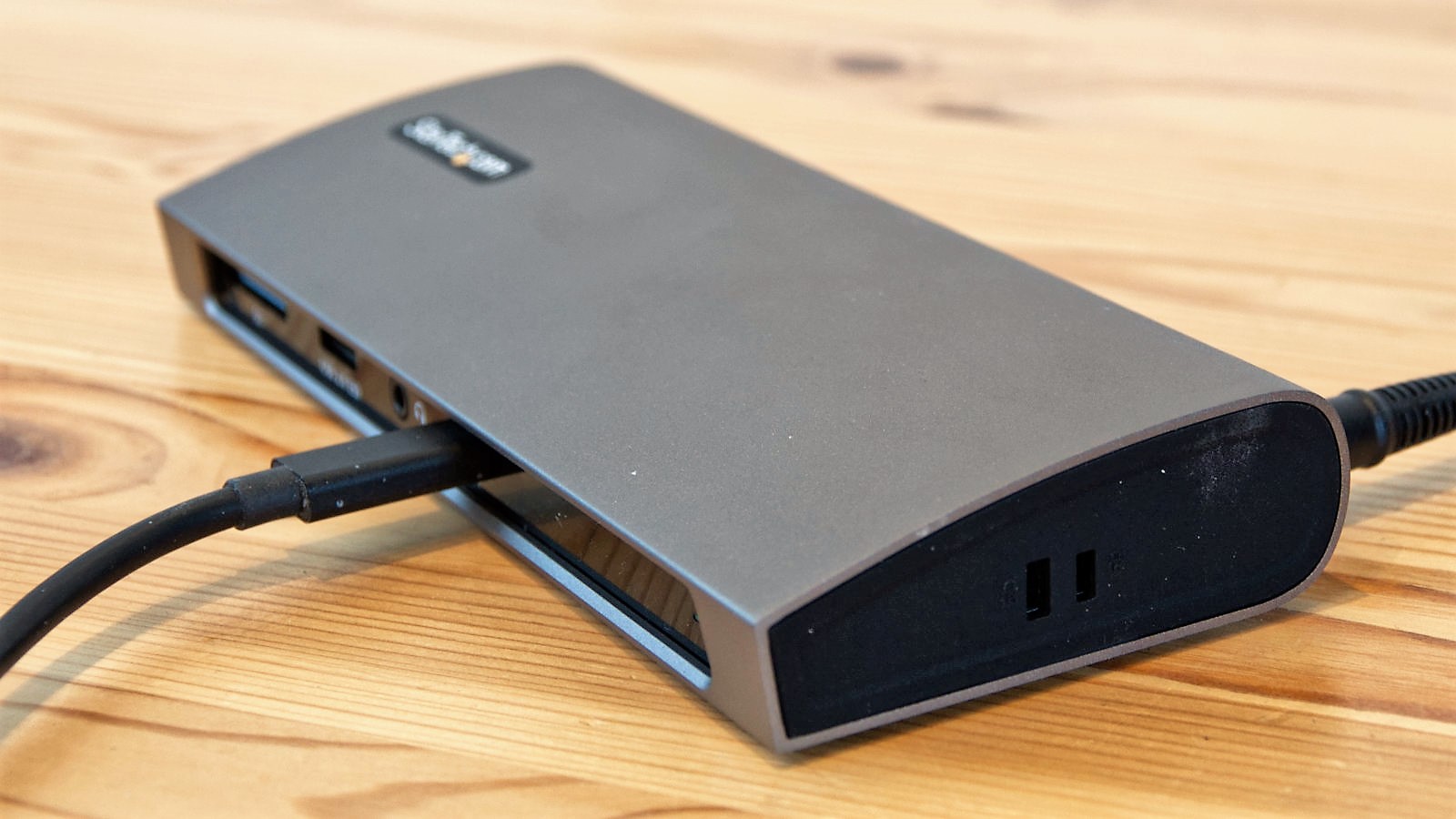
What’s most different about this design is that the StarTech made no effort to provide any holes or other means to ventilate the internal electronics. Instead, this design appears to rely entirely on the thick aluminium metal of the case to radiate that heat away to the outside.
We can only hope that StarTech fully tested this concept, as sealing electronics away from cooling air doesn’t often end well, in our experience.
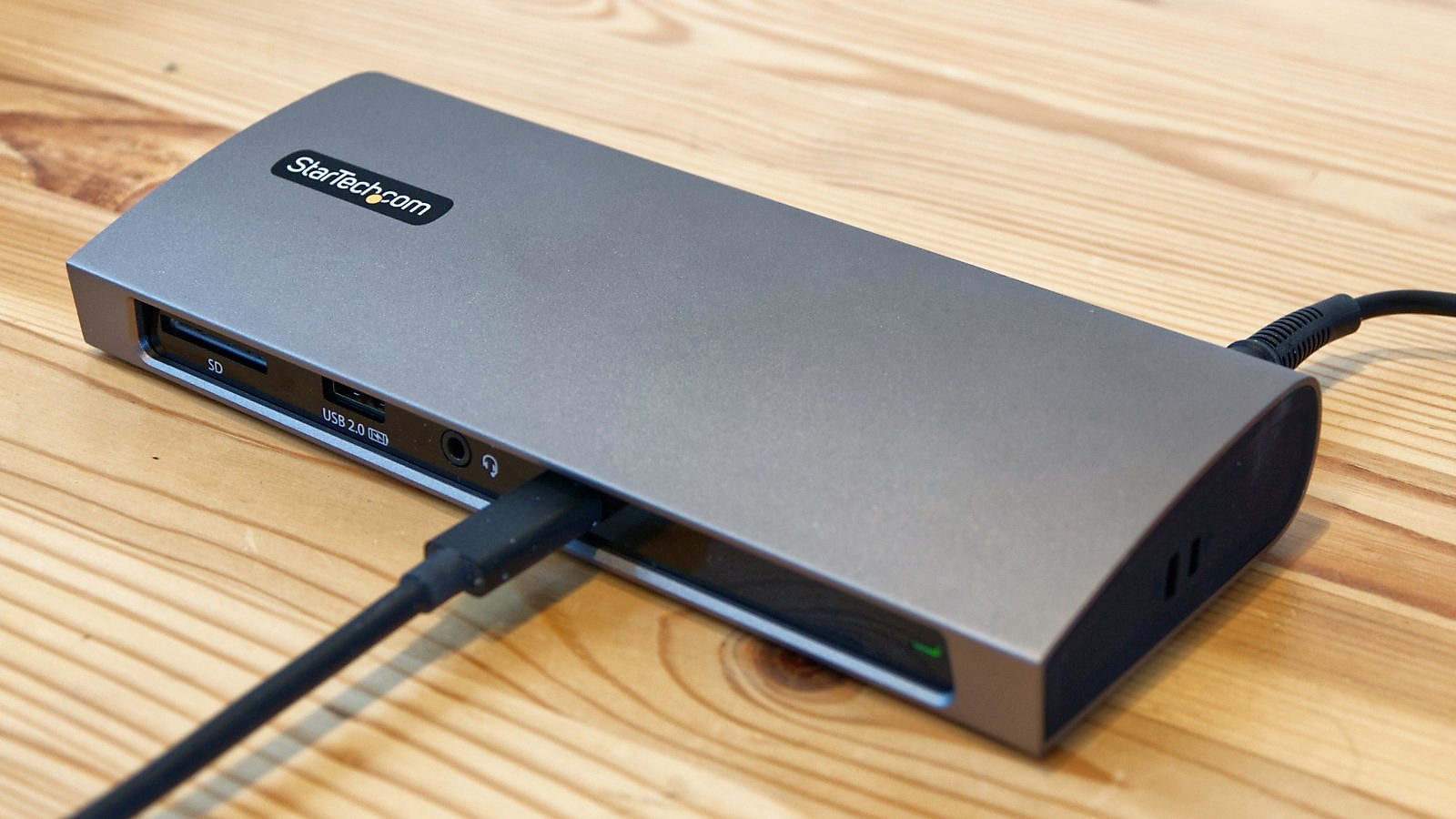
Hardware
Like all the Thunderbolt 4 hubs and docks currently available, at their heart, they use the same Intel created silicon. Those chips provide a raft of choices about what functionality hardware makers wish to support through USB, Thunderbolt, and other connection technologies.
The approach taken by StarTech is to offer the greatest amount of flexibility for the customer, knowing that often these devices are repurposed over their working lives.
Where this design stands out is that the Thunderbolt 4 connection to the host system supports up to 96W charging, the biggest amount of power that we’ve seen on a Thunderbolt dock so far.
That makes it ideal for those mobile workstations that need 90W+ to run and charge, specifically those that aren’t adequately supported by docks with only 60W or even 85W power delivery.
The included PSU, made by Liteon, can output 135W. That capacity must cover not only the 96W that can be passed to the connected laptop but 15W that each the downstream Thunderbolt port demands, the 7.5W that the USB 2.0 port can relay for charging a phone or tablet, and whatever power is needed to run the dock.
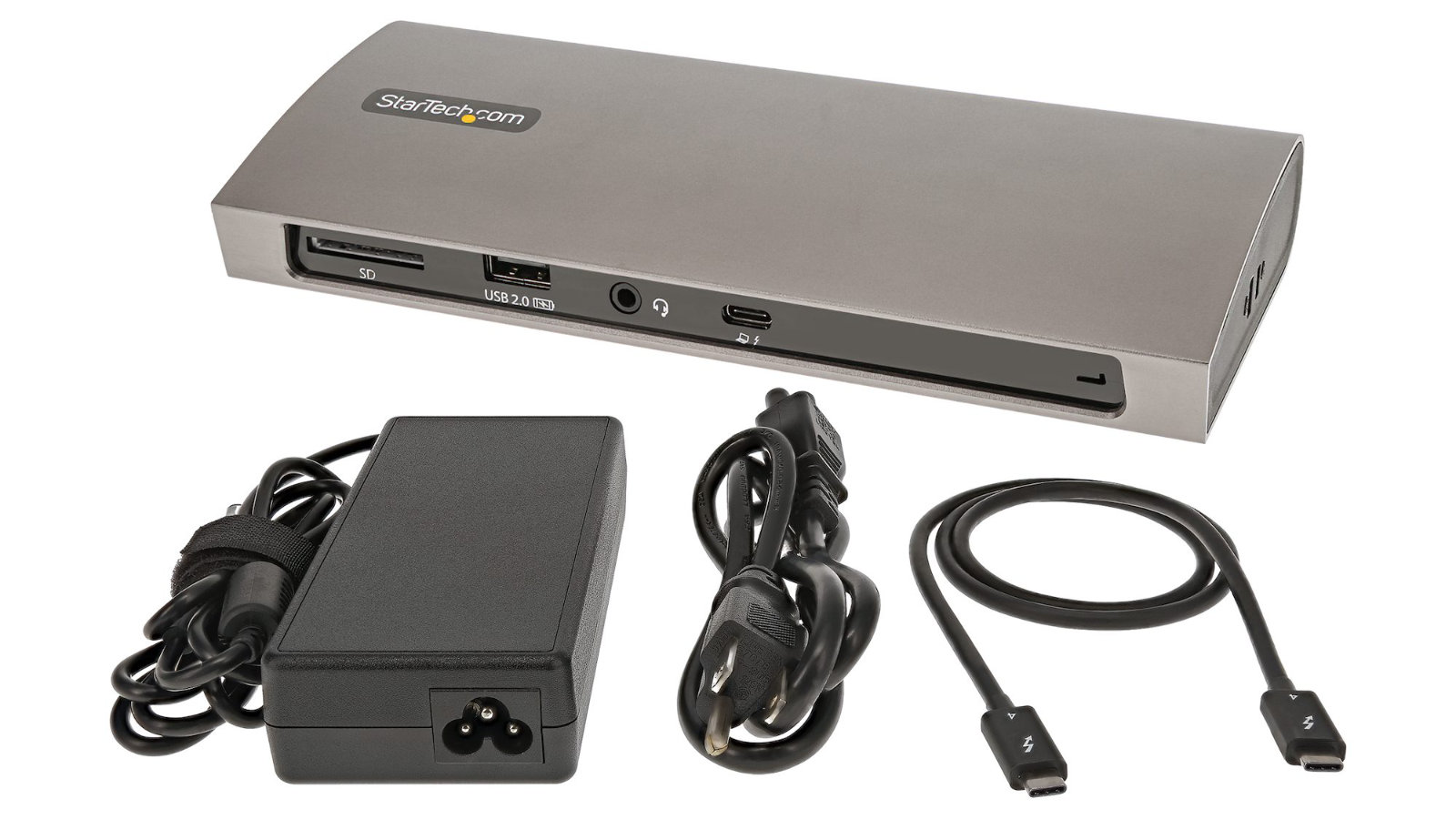
It’s worth mentioning that depending on the number of devices attached, there might be a slight power oversubscription here, and we’d assume under that scenario that the laptop would get slightly less power to avoid pulling more from the PSU than it is rated.
Similarly, adding up the bandwidth that the three TB3 downstream ports and the USB 3.2 Gen 2 ports would exceed the total 40Gbits that Thunderbolt 4 has to allocate by at least 50%.
This shortfall is more likely if any downstream ports are used for displays since the bandwidth given up for these can’t be easily relinquished for other demanding data transferring peripherals.
This isn’t a limitation of this dock specifically, but of Thunderbolt 4 technology in general. Intel has encouraged hardware makers to create docks and hubs that have more ports than can could be feasibly supported at maximum speed. They optimistically assume few users will ever run into these practical limits, and to a degree, they’re probably right.
In use
Since Thunderbolt technology was designed to be plug-and-go, deploying the StarTech Thunderbolt 4 dock is as straightforward as you might expect.
Once it is connected to the computer and sanctioned by the Thunderbolt control centre (on the PC) and connected peripherals or services (LAN) will appear on the host system as if they were directly connected.
Where StarTech goes that extra mile beyond what we’ve seen elsewhere is that they offer a custom connectivity tool that allows admins to see what has been connected to the host PC directly and using the dock.
It has other uses than working with the dock, but installing this tool enables the MAC address of the host PC to be passed through to the dock LAN adapter, perfect for those locations that use MAC address filtering.
For those wanting to use a monitor alongside this dock, StarTech sells some cost more than you can buy this technology elsewhere.
Its premium solution is the dual DisplayPort 1.4 adapter (TB32DP14) that supports dual 4K screens or a single 8K/5K panel for an eye-watering $142.99. StarTech has a cheaper one for $99 that only works with Windows computers, but the design for both PC and Mac costs much more.
Anyone wanting to connect a single screen of up to 4K through HDMI via Thunderbolt more affordably should search on Amazon, as a cable for that job costs just $20 or less there.
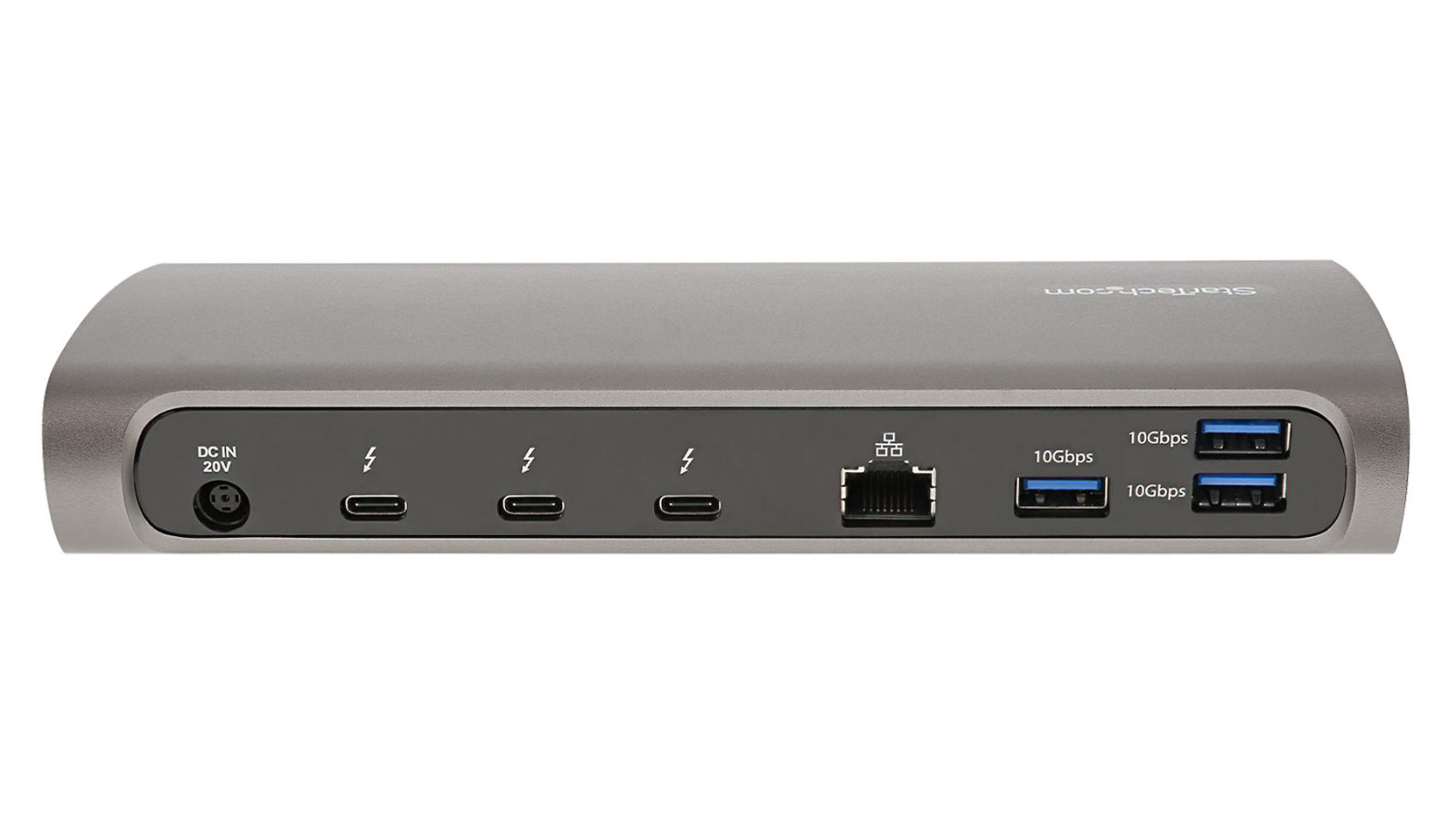
Competitors
There are plenty of Thunderbolt 4 designs available now with most of the features seen here, and most cost less than this one.
Of these, we’d recommend the OWC Thunderbolt Dock. It offers almost as much charging power at 90W and a practically identical port layout to the StarTech design. But critically, it costs only $279, a considerable reduction over the $439.99 StarTech is asking.
We’d accept that the OWC product isn’t as visually elegant, but the functionality is comparable.
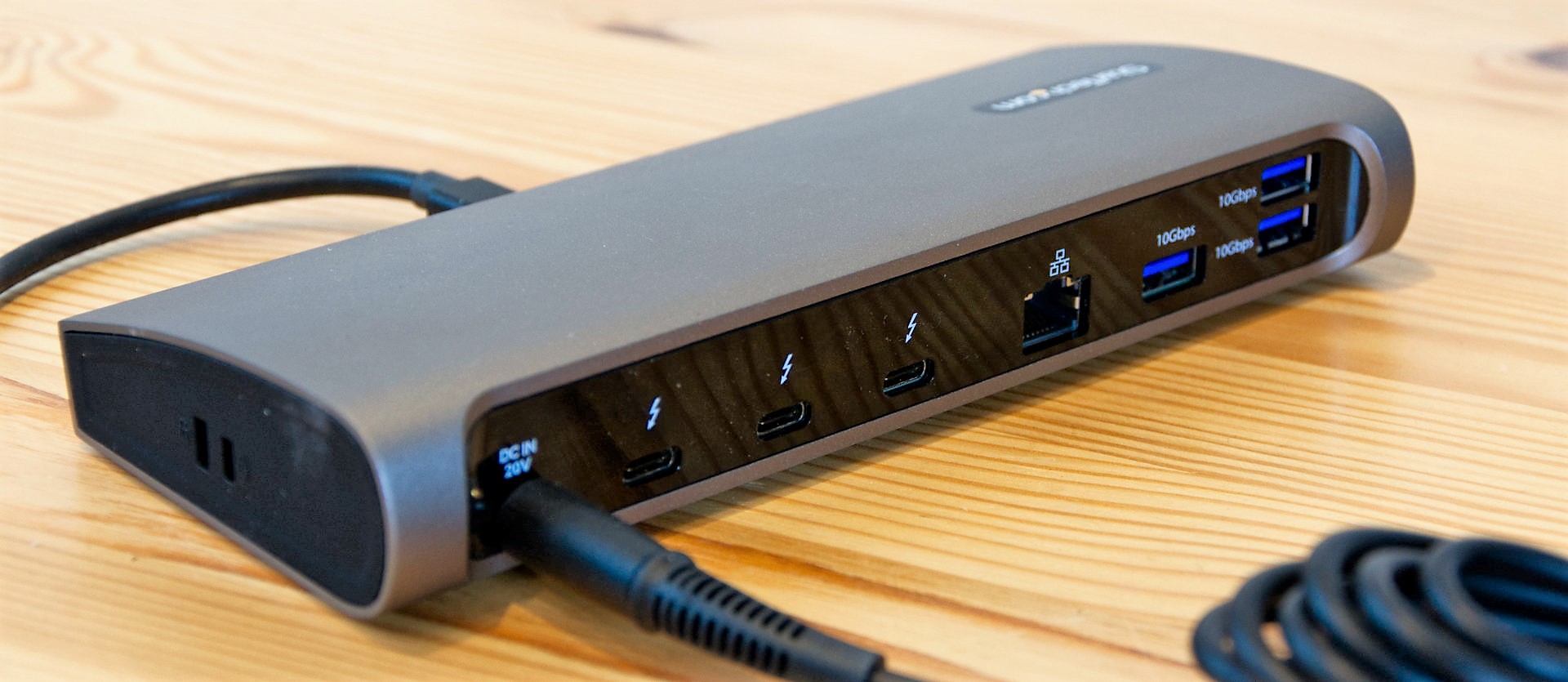
Final verdict
What’s undeniable is that StarTech has delivered a very refined and elegant Thunderbolt 4 dock with many potential uses.
The amount of charging power it can deliver and the flexibility offered by this many USB 3.2 Gen 2 and Thunderbolt 3 ports are paramount.
Against that is a unit cost that makes other decent Thunderbolt 4 docks look like a bargain.
It’s way too expensive, especially if you also need to factor display adapters into the purchasing equation.
Had StarTech priced this more realistically, it would be easier to recommend. As it stands, other Thunderbolt 4 options made better economic sense.
- We’ve picked out the best laptop docking stations
Mark is an expert on 3D printers, drones and phones. He also covers storage, including SSDs, NAS drives and portable hard drives. He started writing in 1986 and has contributed to MicroMart, PC Format, 3D World, among others.
